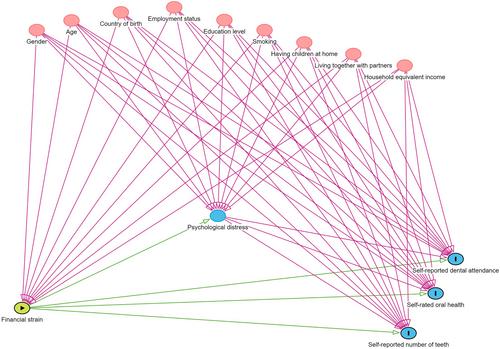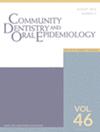The role of psychological distress in the relationship of financial strain with oral health and dental attendance in Dutch adults: A mediation analysis based on cross-sectional data
Abstract
Objectives
The study aimed to assess whether psychological distress mediates the association between financial strain and oral health and dental attendance in the Dutch adult population.
Methods
The study followed a cross-sectional design based on 2812 participants from the 2014 wave of the Dutch population-based GLOBE study. Financial strain was considered the exposure, while psychological distress measured with the Mental Health Inventory-5 (MHI-5) was the mediator. The outcomes included self-reported number of teeth, self-rated oral health, and self-reported dental attendance. Generalized regression analyses were used for the mediation analysis adjusted for several covariables.
Results
Greater financial strain was significantly associated with poorer self-rated oral health (total effect: 0.09, 95%CI: 0.05; 0.14) and restorative or no dental attendance (i.e. participants never visiting a dentist or only visiting a dentist for regular treatments or when they have complaints with their mouth, teeth, or prosthesis) (total effect: 0.05, 95%CI: 0.02; 0.09). Greater financial strain was not significantly associated with self-reported number of teeth (total effect: −0.14, 95%CI: −0.91; 0.64). Psychological distress significantly mediated the association of financial strain with self-rated oral health (average causal mediation effect [ACME]: 0.02, 95%CI: 0.01; 0.03) and self-reported dental attendance (ACME: 0.01, 95%CI: 0.00; 0.02), respectively. However, it did not significantly mediate the association of financial strain with self-reported number of teeth (ACME: −0.11, 95%CI: −0.25; 0.02). The estimated proportion of the total effect of financial strain on self-rated oral health and self-reported dental attendance that could be explained by psychological distress was respectively 24% (95%CI: 14%; 48%) and 19% (95%CI: 6%; 62%).
Conclusions
Psychological distress partly explains the association of financial strain with self-rated oral health and dental attendance, but not with self-reported number of teeth. Future studies using longitudinal data are necessary to confirm the results.


 求助内容:
求助内容: 应助结果提醒方式:
应助结果提醒方式:


